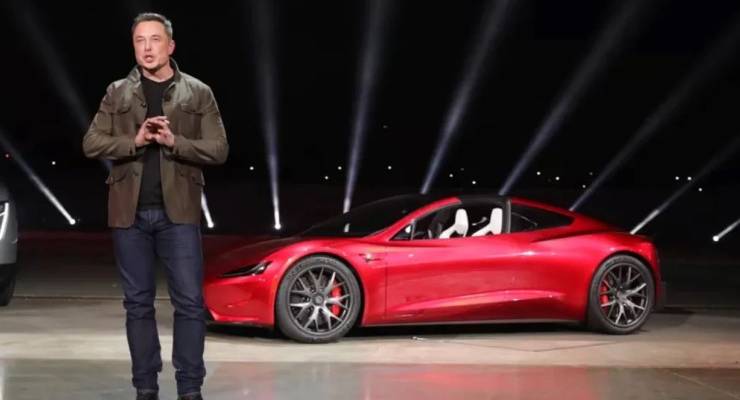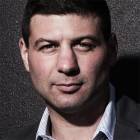
The thing about asset bubbles is they’re not created equal.
Certain asset classes and individual securities will grab an outsized share of attention and price appreciation. The current bubble in markets is almost a decade old and has been spurred by central banks essentially destroying the value of money. This has meant great franchises (think Apple, Microsoft, Atlassian, Netflix, Alphabet) are likely overpriced.
Then you’ve got the seedier end of the bubble — from genuinely good businesses that unfortunately don’t make much money (Tesla) to downright terrible businesses that probably won’t survive.
As investing legend Michael Burry, made famous by The Big Short, tweeted, there’s now “more speculation than the 1920s. More over-valuation than the 1990s. More geopolitical strife than the 1970s.”
Let’s look at some highlights of the bubble in more detail.
The granddaddy of today’s bubble is of course Tesla, the allegedly trillion-dollar business which is almost tailor-made for this sort of environment. It has in Elon Musk an enigmatic, charming and borderline sociopathic leader, who is part genius and part vile, offensive douche (the two are not mutually exclusive: see Steve Jobs). Tesla has created a brilliant product (your writer loves his Tesla) and an incredible narrative. It also has a vertically integrated supply chain and distribution network that is far more efficient than the incumbent third-party dealership network.
Tesla could very well be the most valuable car business in the world. The thing is, Toyota, which is the second most valuable car maker, has a market capitalisation of $255 billion. It generates about US$245 billion in annual sales. Tesla is valued by the market at $1.13 trillion (down from $1.3 trillion a few weeks ago) despite managing only US$31 billion in sales.
There are very good reasons why Tesla could receive a higher multiple than a legacy, slower-growing business like Toyota, but both make cars and Toyota (which is genuinely profitable) is priced at one times’ sales, while Tesla is priced at more than 30 times’ sales.
Such is the absurdity surrounding Tesla that a recent price rise was caused by a bankrupt car rental firm (Hertz) possibly ordering 100,000 Teslas (which even Musk noted wouldn’t actually change Tesla’s valuation.
Tesla’s main competitive advantages — its product and brand — are assailable. Even if the legacy car makers struggle to match its design and brand, Apple confirmed again last week that it was working on its own EV, which could take a big chunk out of Tesla’s cache (most Tesla owners love Apple even more than they love Tesla).
Telsa’s share price could fall by 95% and it still wouldn’t be cheap. But Tesla looks like a veritable value stock compared with rival EV manufacturer Rivian which makes a cool-looking electric SUV and is part owned by Amazon.
Last year it delivered a grand total of 156 cars (mostly to employees) and even now Ford and GM sell far more cars in a day than Rivian will sell next year. But that didn’t stop Rivian raising US$11 billion for a valuation of US$90 billion (since increased to US$127 billion), making it, comically, the world’s third most valuable car maker. It is worth roughly the same as Honda, Hyundai and BMW combined.
Again, Rivian sold 156 cars last year.
Rivian forecasts revenue of between zero and $1 million in the third quarter while losing US$1.28 billion. Oh, and it is also being sued by a former senior executive for having a “toxic bro culture”. This. Will. Not. End. Well.
While the US appears to be the epicentre of the current bubble, Australia isn’t being totally left out. Last week Beforepay — which claims to be a buy-now, pay-later provider but is really a dodgy payday lender with a misleading name — announced plans to list on the ASX in December at the ambitious valuation of $158 million.
In addition to its business essentially being an online pawn shop, the valuation is — to use a technical investing term — batshit crazy. In almost two years, Beforepay has lent only $100 million to 100,000 (presumably fairly desperate) customers. The AFR claimed that Beforepay generated $4.5 million in revenue last financial year, which puts it on a historical multiple of 30 times revenue. ANZ, with a very different business and growth profile, trades on a four times revenue multiple. Even worse, Beforepay’s write-offs exceed the amount it makes in interest revenue.
It appears that Beforepay is both morally and profitably bereft, not a great combination. One may be forgiven by some; both, less so.
Beforepay’s founder Tarek Ayoub appears to been cast aside and the business is now led by former McKinsey consultant and Westpac chief strategy officer Jamie Twiss (because bankers make such great start-up execs). Beforepay is being chaired by former Westpac CEO Brian Hartzer, who was forced to resign as CEO after the AUSTRAC scandal in 2019.
Warren Buffet once famously quipped that only when the tide goes out do you discover who was swimming naked. We may shortly be copping an eyeful.








Pretty obvious that Adam hasn’t actually looked at the business plan and actual financial results from Tesla. While I agree that we have some overpriced companies, TSLA is not one of them. Saying that they are just a car company completely misses the point. When you look at a company that manages to grow production by more than 50% p.a. while building 4 new factories and still delivering 15% operating margin and 30% gross margin then you know something is different. For reference, Tesla’s Shanghai factory was paid off in under 20 months, they have $16B cash on hand and practically no debt.
They sell every single product that they make and there is a 6 month waiting list. Production in Germany and Texas come on line in a month or so and we haven’t even started to talk about the energy markets where they now have a utility licence, the power products, the now opening up global charging network, the AI and learning projects etc etc. To say that Tesla is a good company that doesn’t make much money is completely and utterly wrong. Like Amazon and other growth companies before it, Tesla has been plowing money back into the business and building a cash generating machine.
Sure, we are in a bubble with the economy, but we are also in a time of unprecedented change and disruption and he’s right, not all stocks are equal. Sadly lots of commentary around what stocks are overvalued completely misunderstands the reality of what is happening and how quickly things are changing. I agree that Rivian’s valuation is ridiculous and driven by people who want to get “the next Tesla” but completely misunderstanding what that really means. Comparing to Toyota who are now so far behind that they are actually lobbying to slow down the transition to EVs globally because they can’t compete is like saying that Kodak shouldn’t have been worried about the mass adoption of something that they pioneered, or that Nokia shouldn’t have worried about Apple.
Tend to agree, article has short term window of focus on a niche technology or innovation sector (also ignores potential Tesla spinoffs or product development). Another good example is CSL which trades at a P/E price to earnings ratio of 44, but an annual dividend yield of only 1%, at face value not even treading water.
However, this masks a massive ROE of 30%+ which is invested back into R&D for future product development and earnings, and maybe evidence of not being bossed by shareholders into paying out maximum dividends in the short term?
Yep. Dividends are not a good indicator of company performance. Asked about dividends at Tesla’s one of the shareholder calls, Musk said he considered dividends are a sign that a company has run out of ideas of where to grow next. Interestingly Tesla’s Return on Invested Capital (ROIC) in 2021 is ~20%, Toyota’s is 4.75%, CSL is 14.9%.
I expect that things are going to get even more interesting after the Q4 results and even more again in late ’22 as Texas and Berlin ramp up. Both of those are new and more efficient factories using gigapress technology. Each press replaces 300 production line robots and reduces the time and effort required to construct the car. The 4680 production line will be up and running then as well, which combined with the structural battery pack reduces the battery cost by around 50%. Tesla have been raising prices to try and dampen demand due to battery and semiconductor supply constraints, so margins will be insane. If the 4680 reduces the battery constraint then they’ll be able to really ramp up production and either pocket the extra margin, reduce prices, or a combination of both. Not to mention that having a local factory in Europe means that they no longer have to supply that market from the US or China – so less transport costs and more margin again.
I expect that they will also start to put some concerted effort into powerwall and megapack production as well tapping into and disrupting the energy market with the combination of the battery and autobidder software.
We then have a company that is supplying and stabilising the grid power, running the consumer power walls and collecting data about demand and generation trends to maximise profit, providing the refuelling network for transport, and also providing insurance for their owners – something that is set to disrupt the insurance industry as well.
Most people are completely unaware that each Tesla on the road operate to collect driving and traffic data and that all of their products do similar functions, all internet connected. Tesla will be able to provide the cheapest insurance for Tesla vehicles because of this collected data and the opportunity to set premiums according to actual driver behaviour. Considering insurance is a large chunk of operating costs, this is even more margin for Tesla.
It’s only the beginning, and Tesla are playing 4d chess while just about everyone else is playing checkers.
The great disruption in transport and energy is on, so all bets are suspended for a while. Musk has no evil in him- he is a visionary.
Great article- thanks Adam. This is another example of the quality of Crikey, and its writers. Well researched, argued and written. I have wondered how Tesla’s share price has gone so high in such a short time. I assumed its all based on hope and potential, however the best term is in fact, speculation. Elon Musk does seem like a nasty, sociopath and you do get the feeling that there will be a correction/crash!! There won’t be much sympathy for him I suspect.
Cobblers!
Adam, what a great article!! You had me laughing in several places. Even an economic ignoramus like myself could (just) understand that “technical investment term”, you used
I fully realize though that what you are writing about is, in reality, anything but a laughing matter, but what the heck, I cannot do anything about it so I am not going to ignore the funny side of it.
Whatever you do Adam, please keep writing these articles for Crikey!
Agreed, keep writing articles like this one. And leave Covid to the experts.